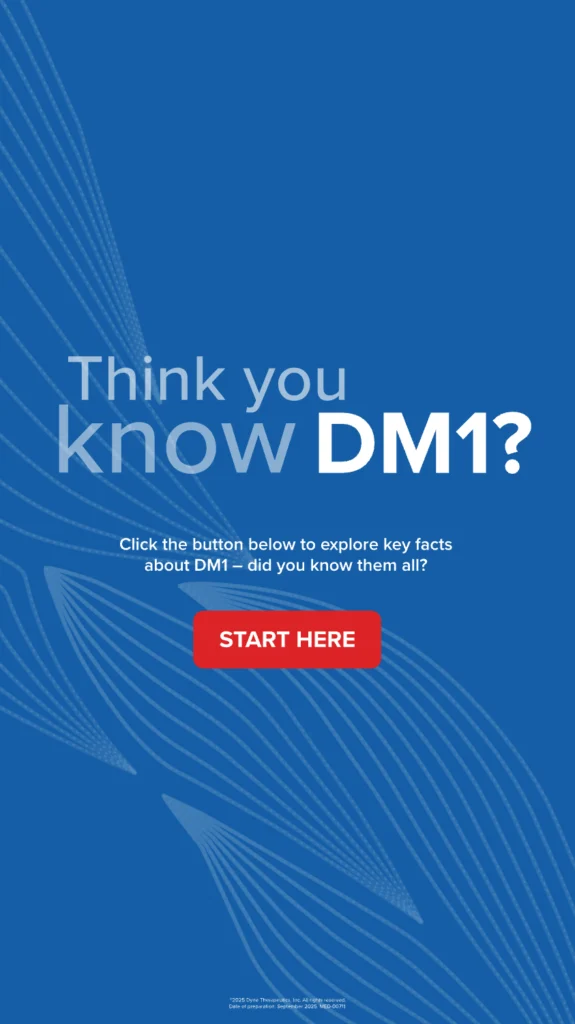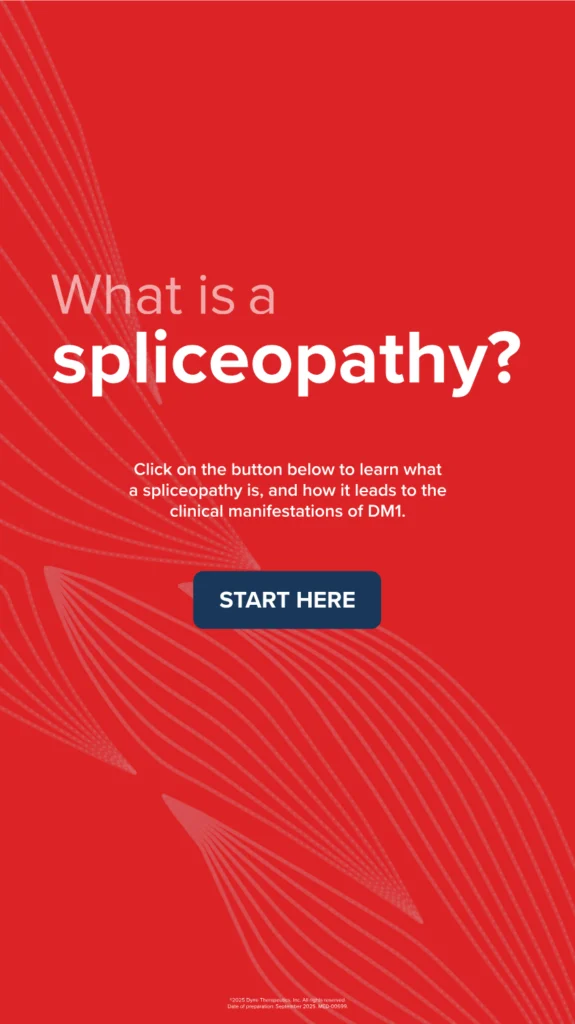Myotonic Dystrophy Type 1 (DM1)
Myotonic dystrophy type 1 (DM1) is the most common muscular dystrophy in adults and is associated with high morbidity and early mortality.1,2 Symptoms of DM1 are heterogeneous and multi-systemic, affecting skeletal and smooth muscle as well as the eye, heart, endocrine, and central nervous systems.3 Expansions in an unstable CTG repeat region in the DMPK gene lead to a widespread disruption of RNA splicing, known as spliceopathy, which drives the multi-system manifestations of the disease.4Although muscle weakness is often reported as the most prominent and impactful symptom of DM1, many find that CNS-related symptoms are more disabling.5–7
1. Liao Q, et al. Neuroepidemiology. 2022;56(3):163–173; 2. Mathieu J, et al. Neurology. 1999;52(8):1658–1662; 3. Ho G, et al. World J Clin Pediatr. 2015;4:66–80; 4. López-Martínez A, et al. Genes (Basel). 2020;11(9):1109; 5. Hagerman KA, et al. Muscle Nerve. 2019;59(4):457–464; 6. Miller JN, et al. Front Neurol. 2021;12:700796; 7. White M. Ther Innov Regul Sci. 2020;54:1010–1017.


